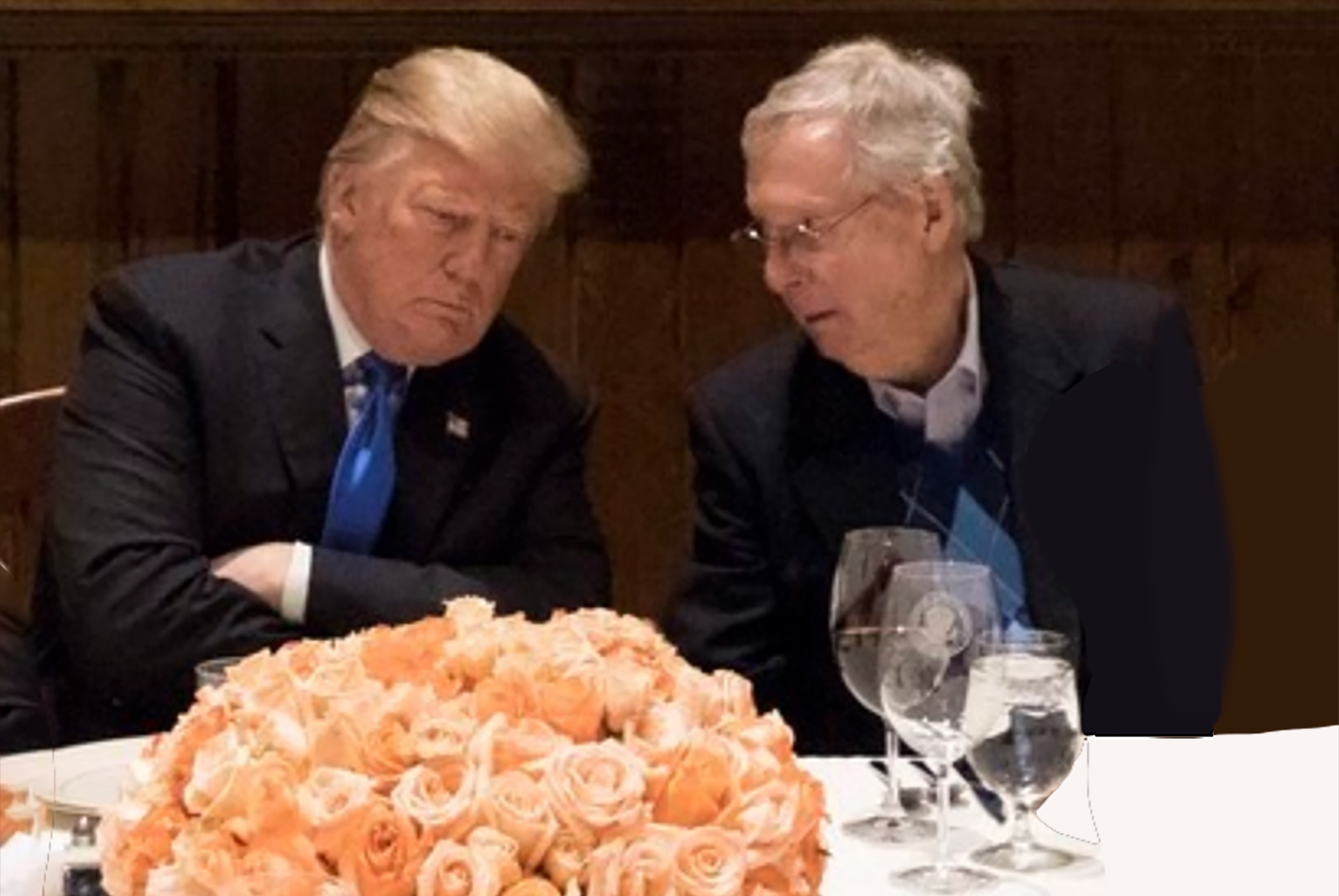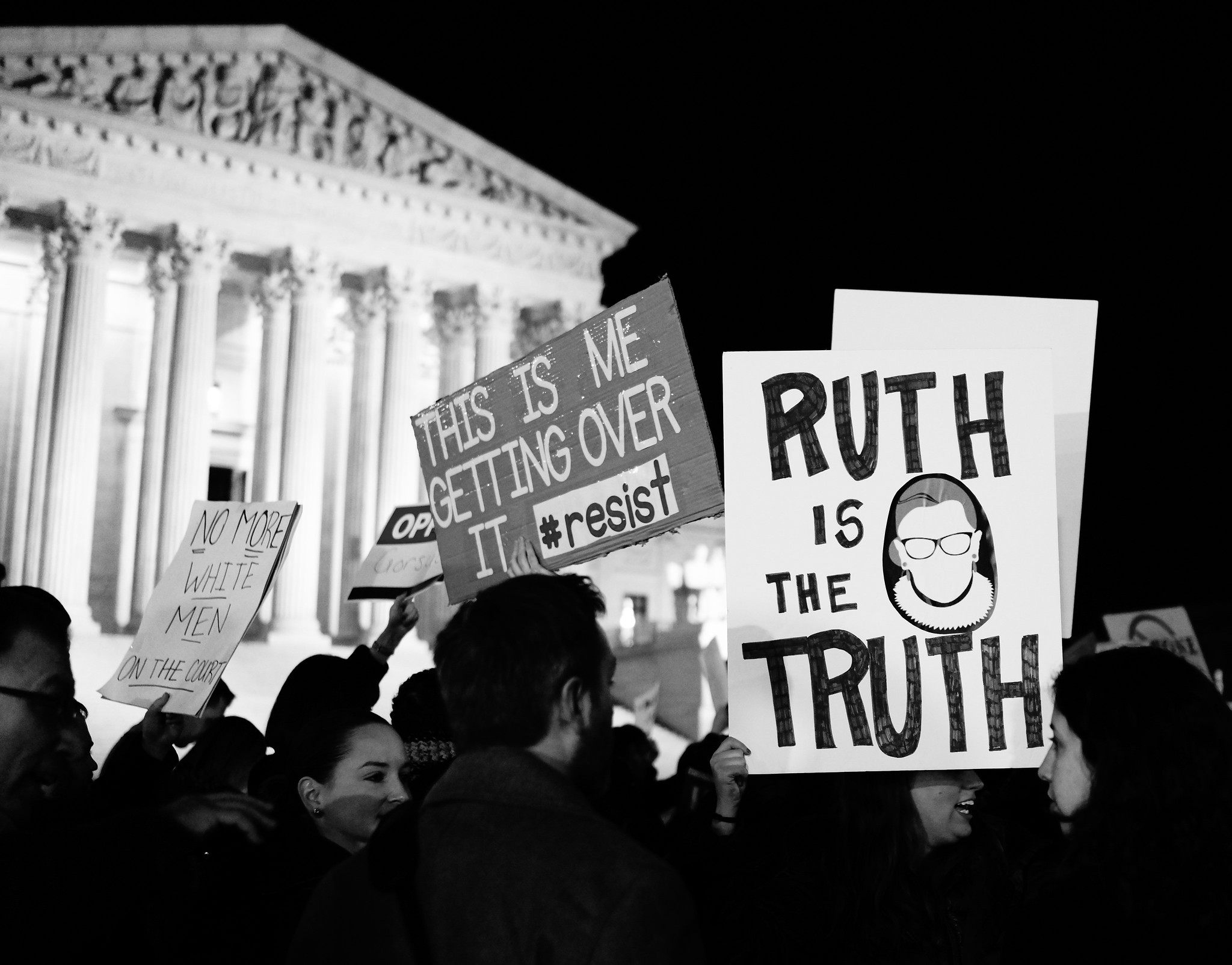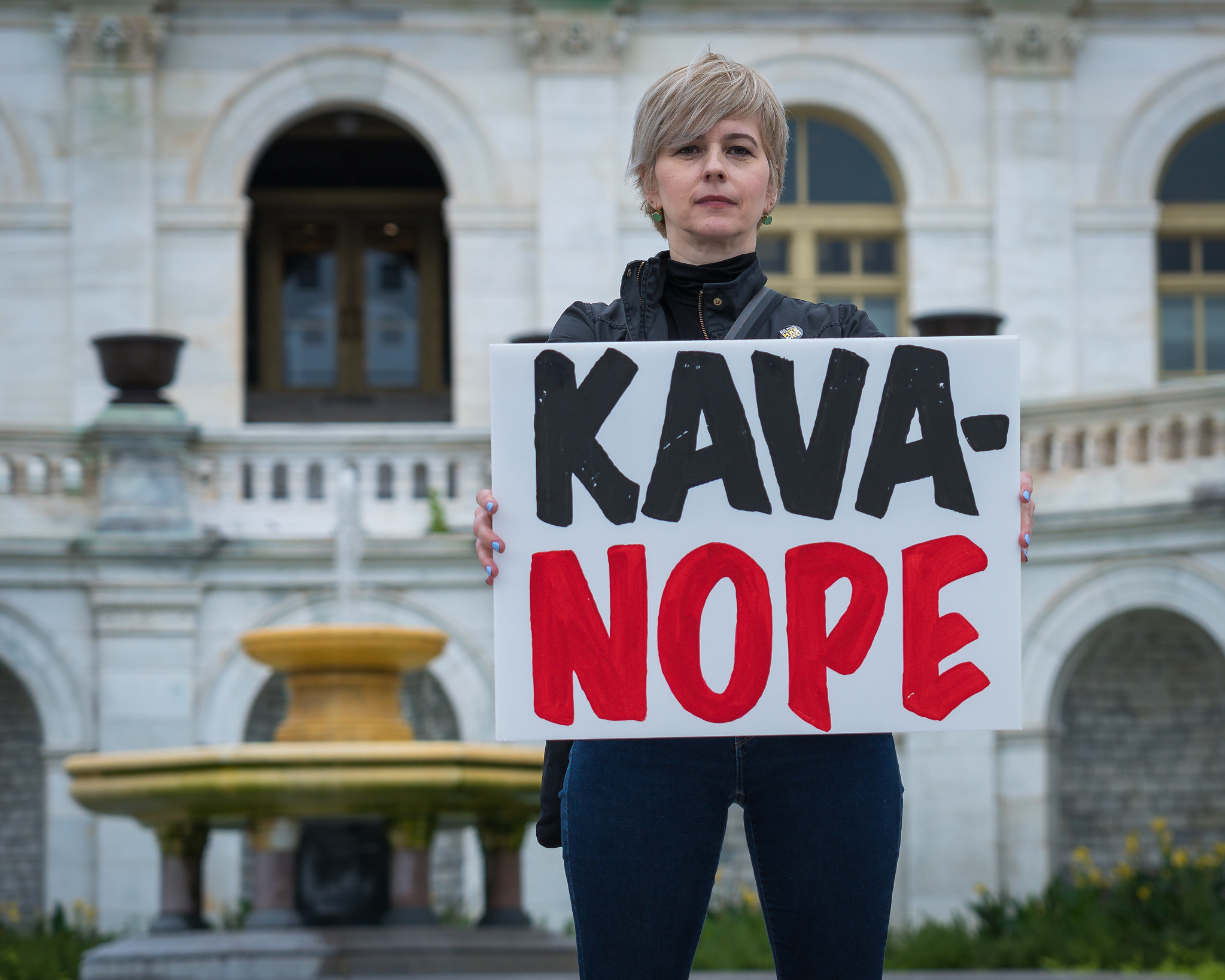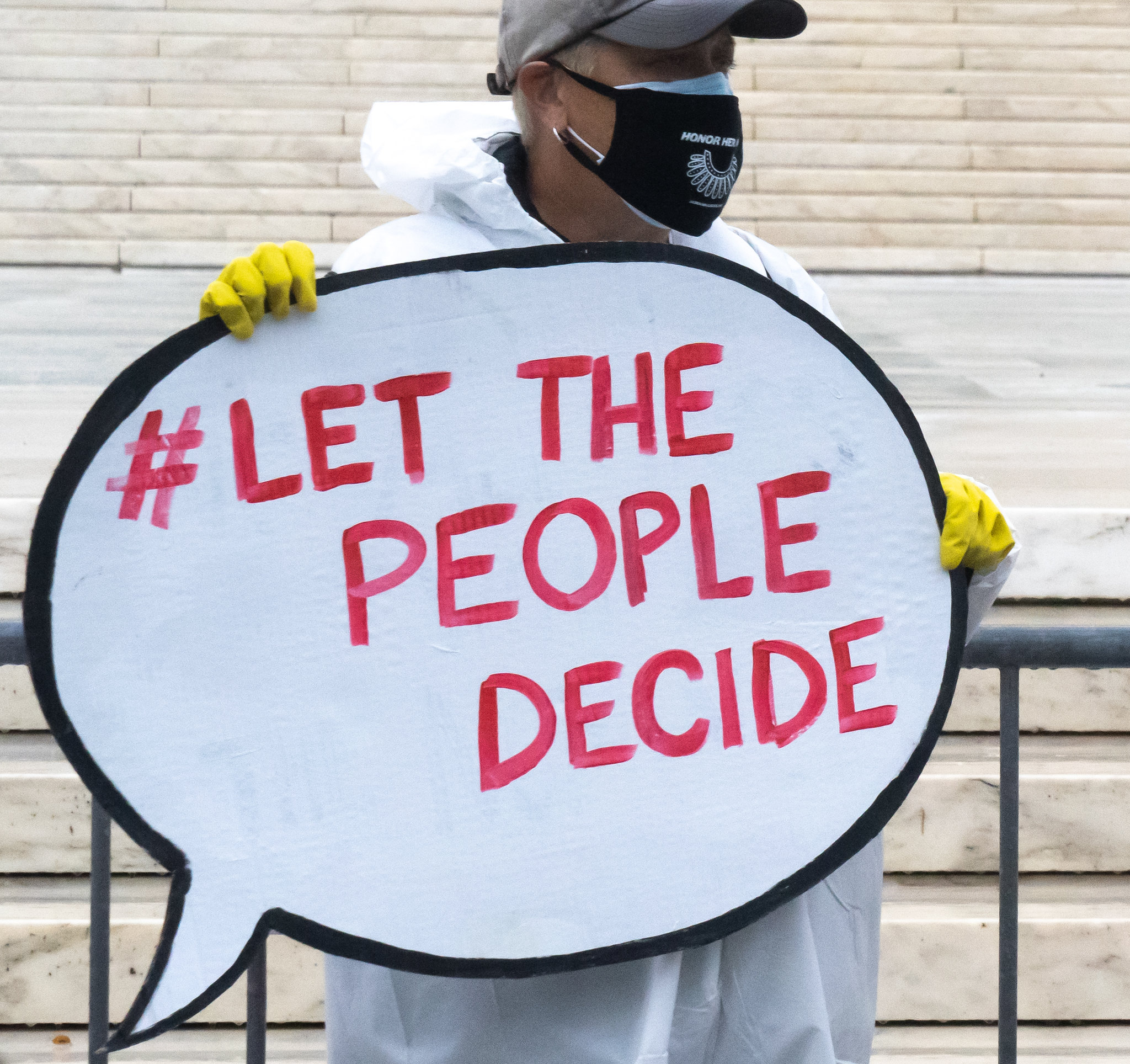
Headline after headline Friday reflected political pundit reaction to Thursday’s Supreme Court oral arguments. The case? Former president Donald J. Trump’s claims of immunity from prosecution for his central role in the January 6, 2021 insurrection.
From “The Trumpification of the Supreme Court” to “Trump Melts Institutions, SCOTUS Edition” most link Trump with the 6-3 conservative majority. After all, three of those appointments happenened in his administration, between 2017 and 2020:
- Neil Gorsuch, April 7, 2017 (54–45)
- Brett Kavanaugh, October 6, 2018 (50–48)
- Amy Coney Barrett, October 26, 2020 (52–48)
But the man behind the (transparent) curtain was hypocritical Sen. Majority Leader Mitch McConnell (R-KY). Without Republican control of the Senate in 2017 and 2020, Trump would have had only one opportunity to nominate a justice. One time. Not three.
Neil Gorsuch, 2017
Gorsuch, 49 when Trump announced the nomination on January 31, 2017, was the youngest nominee since Clarence Thomas, nominated in 1991 at 43.
Gorsuch filled the seat vacated when Antonin Scalia died on February 13, 2016. McConnell’s initial statement on his death:
“The American people should have a voice in the selection of their next Supreme Court Justice. Therefore, this vacancy should not be filled until we have a new president.”
His argument: the presidential election cycle had begun. The election was almost nine months away.
That block, a personal filibuster of sorts, left the Supreme Court with an empty seat for more than a year.
Nevertheless, President Barack Obama nominated Merrick Garland for the seat on March 16, 2016. The election was eight months away. Due to McConnell’s intransigence and rejection of Senate norms,* the seat remained vacant through January 20, 2017, when President Obama’s administration ended.
Eleven days later, Trump nominated Gorsuch. When Senate Democrats filibustered the April nomination vote, McConnell bypassed the filibuster rule (“nuclear option“), allowing the nomination to come to the floor with only majority support.
This was McConnell’s seat, not Trump’s.

Brett Kavanaugh, 2018
On July 9, 2018, Trump nominated Kavanaugh to the Supreme Court to replace Anthony Kennedy, who was retiring.
Aside: Trump was planning ahead: in 2009, Kavanaugh published a Minnesota Law Review article that defended the president from prosecution while in office. (In 2009, Kavanaugh agreed that immunity should be lifted after leaving office; will he hold to that in 2024?)
The Senate confirmed Kavanaugh on Oct. 6, 2018 after a contentious set of hearings. For example, he was a White House staff secretary in the George W. Bush administration; he was involved in the legal case work on the 2000 United States presidential election recount in Florida; and he was part of the team that Independent Counsel Ken Starr managed while investigating President Bill Clinton. In addition, Christine Blasey Ford accused Kavanaugh of sexual assault while the two were in high school. Two additional women accused the nominee of assault.
Even before the Senate had heard from Ford, McConnell promised to “plow right through” the nomination.
“In the very near future, Judge Kavanaugh will be on the United States Supreme Court,” McConnell said to applause from religious conservatives at the Value Voters Summit Friday. “So my friends, keep the faith, don’t get rattled by all of this. We’re going to plow right through it and do our job.”
What was going on? The midterm elections were about five weeks away.
[D]espite the specter of Clarence Thomas and Anita Hill hanging over Dr. Christine Blasey Ford’s and Brett Kavanaugh’s testimony on Thursday, the Senate majority pressed ahead, using prosecutorial pinch-hitter Rachel Mitchell as their interlocutor rather than risk the poor optics of a lineup of insensitive men clumsily interrogating a sexual assault survivor. But, despite their best efforts, as with the landmark hearings 27 years ago, this showdown has become a broader gauge of how society handles issues of sexual harassment and assault…
The complaints about Ford’s allegations surfacing in the 11th hour, the flat refusal to ask the FBI to engage in an investigation into her allegations and the lack of interest in subpoenaing Mark Judge (the other man Ford has named as helping assault her) are all about the electoral timeline and the fear of a Democratic majority.
As with the rush to confirm Barrett (below), McConnell treated the Kavanaugh nomination exactly opposite of Garland’s.
The Republican leader has embraced and accelerated his chamber’s downward spiral first, putting the rise of the filibuster onto steroids, supporting the legislative terrorism of debt-ceiling showdowns, sandbagging Garland and now preparing to ram Kavanaugh through without a proper vetting. He is, as my former colleague Pat Garofalo put it, “Mitch McConnell, destroyer of norms.”
This was McConnell’s seat, not Trump’s.

Amy Coney Barrett, 2020
Ruth Bader Ginsburg died on Friday, September 18, 2020. Ten days later, Monday, September 26, 2020, Trump nominated Barrett to succeed Ginsburg.
By McConnell’s 2016 political philosophy, her nomination should have languished. Based on the Senate’s initial calendar for 2020, the Senate should have been in session only four more days. Instead, McConnell added 18 days to the calendar of work.
The Senate confirmed Barrett on Oct. 26, 2023.
The election was November 3, the following Tuesday. At 38 days before the election, this “scenario [was] unlike any in American history.” The next closest, which wasn’t successful, occurred on Aug. 16, 1852, 78 days before the election on Nov. 2, 1852.
This was McConnell’s seat, not Trump’s.

Trump is a symptom, not the disease. Trump did not put three conservatives on the court in one term. McConnell did.
~~~
* Post Civil War era, the Senate confirmed nine Supreme Court vacancies during election years. Over the history of the Republic:
There have been 103 prior cases in which—like the case of President Obama’s nomination of Judge Garland—an elected President has faced an actual vacancy on the Supreme Court and began an appointment process prior to the election of a successor. In all 103 cases, the President was able to both nominate and appoint a replacement Justice, by and with the advice and consent of the Senate.
.
Talk to me: BlueSky | Facebook | Mastodon | Twitter
Known for gnawing at complex questions like a terrier with a bone. Digital evangelist, writer, teacher. Transplanted Southerner; teach newbies to ride motorcycles. @kegill (Twitter and Mastodon.social); wiredpen.com
















